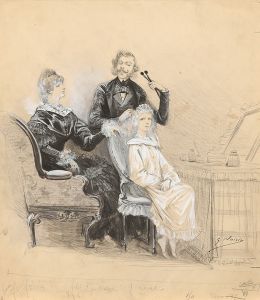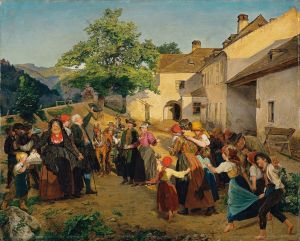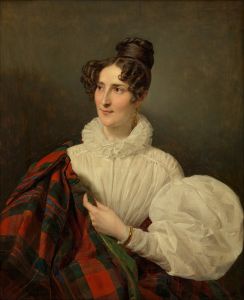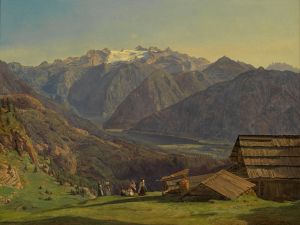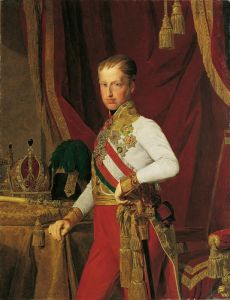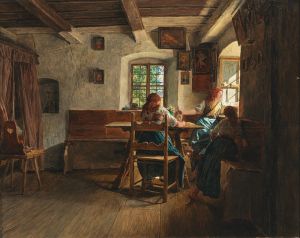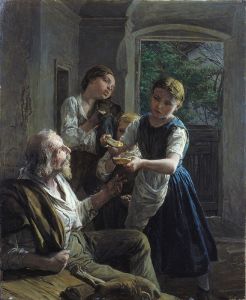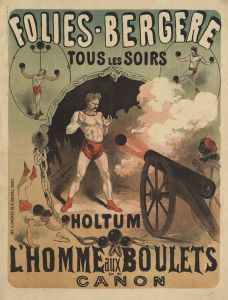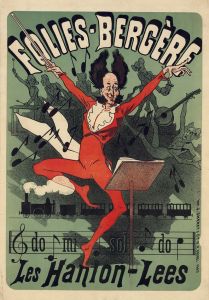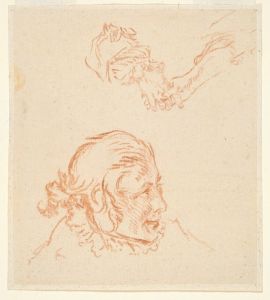
Carl Wilhelm Lucas , Hofschauspieler am k.u.k. Burgtheater
A hand-painted replica of Ferdinand Georg Waldmüller’s masterpiece Carl Wilhelm Lucas , Hofschauspieler am k.u.k. Burgtheater, meticulously crafted by professional artists to capture the true essence of the original. Each piece is created with museum-quality canvas and rare mineral pigments, carefully painted by experienced artists with delicate brushstrokes and rich, layered colors to perfectly recreate the texture of the original artwork. Unlike machine-printed reproductions, this hand-painted version brings the painting to life, infused with the artist’s emotions and skill in every stroke. Whether for personal collection or home decoration, it instantly elevates the artistic atmosphere of any space.
Ferdinand Georg Waldmüller, an eminent Austrian painter of the 19th century, is renowned for his contributions to the Biedermeier period, a time characterized by a focus on realism and detail in art. One of his notable works is the portrait titled "Carl Wilhelm Lucas, Hofschauspieler am k.u.k. Burgtheater." This painting exemplifies Waldmüller's skill in capturing the essence of his subjects with meticulous attention to detail and a profound understanding of character.
Carl Wilhelm Lucas was a distinguished actor at the k.u.k. Burgtheater, the Imperial and Royal Court Theatre in Vienna, which was one of the most prestigious theaters in Europe during the 19th century. The Burgtheater was a cultural hub, attracting audiences from across the continent and serving as a platform for some of the era's most celebrated actors and playwrights. Lucas, as a Hofschauspieler, or court actor, held a significant position within this esteemed institution, contributing to its reputation for excellence in the performing arts.
Waldmüller's portrait of Lucas is a testament to the artist's ability to convey the personality and status of his subjects. The painting captures Lucas in a moment of poised confidence, reflecting his stature and prominence in the theatrical world. Waldmüller's use of light and shadow, along with his attention to the textures of fabric and skin, brings a lifelike quality to the portrait, making it a vivid representation of the actor.
The Biedermeier period, during which Waldmüller created this portrait, was marked by a shift towards more intimate and personal subjects in art, moving away from the grand historical and mythological themes of previous eras. This period saw artists focusing on the everyday lives of people, capturing the subtleties of human expression and the nuances of social status. Waldmüller's work is a quintessential example of this trend, as he often depicted individuals from various walks of life with a sense of realism and empathy.
In addition to his portraits, Waldmüller was also known for his landscapes and genre scenes, which further showcased his versatility and keen observation of nature and society. His works are characterized by their clarity, precision, and vibrant use of color, qualities that have earned him a lasting place in the history of art.
The portrait of Carl Wilhelm Lucas not only highlights Waldmüller's artistic prowess but also serves as a historical document, offering insights into the cultural milieu of 19th-century Vienna. Through this painting, viewers gain a glimpse into the world of the Burgtheater and the individuals who contributed to its legacy.
Today, Waldmüller's works, including the portrait of Lucas, are held in high regard and can be found in various museums and collections, where they continue to be appreciated for their artistic merit and historical significance. The painting remains a valuable piece for those interested in the intersection of art and theater, as well as the broader cultural landscape of the Biedermeier period.







